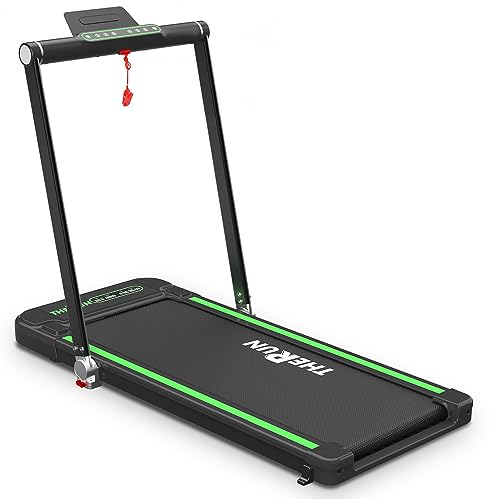
Treadmill Sale
Add a review FollowOverview
-
Founded Date 1925年3月26日
-
Sectors Sales & Marketing
-
Posted Jobs 0
-
Viewed 10
Company Description
What Is Walking Machine And Why Is Everyone Dissing It?
The Walking Machine: A Comprehensive Guide to Your Fitness Companion
In today’s fast-paced world, where time is a high-end, keeping a consistent workout routine can be a challenge. For lots of, a walking machine– typically referred to as a treadmill– acts as an ideal fitness buddy. This post provides an in-depth appearance at walking machines, including their benefits, types, maintenance ideas, and often asked questions.
Why Choose a Walking Machine?
Walking machines provide a practical and efficient method to include cardiovascular exercise into daily life. Here are numerous key benefits:
- Convenience: Walking machines allow people to work out anytime, no matter weather or time restraints. They are ideal for busy schedules.
- Versatility: Users can stroll, jog, or perform at their own pace and strength.
- Safety: Walking machines present a lower threat of injury compared to outdoor walking or running, specifically for novices or those recuperating from injuries.
- Tracking Progress: Many treadmills featured built-in displays that track metrics like speed, distance, and calories burned.
Kinds Of Walking Machines
When considering a walking machine, it’s vital to select the best type based on specific physical fitness goals and space restraints. Below are the primary kinds of walking machines:
| Type | Description |
|---|---|
| Handbook Treadmills | These machines do not have a motor, and users need to stroll or run to rotate the belt. |
| Electric Treadmills | Powered by an electric motor, permitting users to set the speed and incline effortlessly. |
| Folding Treadmills | Designed for simple storage, these treadmills can be folded up when not in usage. |
| Desk Treadmills | Suitable for a double work and exercise environment, these compact machines enable walking while working. |
| Incline Trainers | These enable users to simulate uphill walking, boosting exercise intensity and calorie burn. |
Picking the Right Walking Machine
Picking the right walking machine can considerably impact motivation and effectiveness. Here are some elements to think about:
Key Features to Look For
- Motor Power: An effective motor makes sure a smooth and consistent workout. For occasional walkers, a 1.5 HP motor is usually adequate; for much heavier usage, look for 3.0 HP and above.
- Belt Size: A broader and longer belt provides more area for a comfy stride. Requirement sizes range from 16 inches broad and 50 inches long.
- Slope Options: Adjustable slope settings can mimic walking or running uphill, increasing the strength of the exercise.
- Shock Absorption: Good shock absorption lowers the threat of joint injuries and boosts comfort.
- Console Features: Look for built-in workouts, heart rate displays, and connection functions like Bluetooth for a more appealing experience.
Spending plan Considerations
Walking machines been available in a large range of costs, depending on features and building and construction quality. Here’s a rough spending plan breakdown:

| Price Range | Features |
|---|---|
| Under ₤ 300 | Basic manual or little electric treadmills with limited features. |
| ₤ 300 – ₤ 700 | More innovative electric treadmills with slope, medium power motors, and much better guarantees. |
| ₤ 700 – ₤ 1500 | High-quality electric treadmills with bigger built-in displays, comprehensive features, and service warranties. |
| ₤ 1500 and above | High-end designs providing advanced innovation, functions, and durable construction for severe fitness lovers. |
Upkeep Tips for Your Walking Machine
To guarantee durability and optimal performance of a walking machine, think about the following maintenance suggestions:
- Regular Cleaning: Dust and sweat can accumulate on the machine and the belt. Clean down the surfaces and clean the belt regularly.
- Lubrication: Depending on the model, lubing the running belt occasionally can avoid wear and tear. Examine the maker standards for recommended lubrication schedules.
- Evaluation: Periodically examine the machine for loose screws or worn parts. Tighten and replace as needed.
- Calibration: Occasionally, check the calibration of your machine’s metrics to ensure they offer accurate data.
- Correct Use: Follow the manufacturer’s recommendations for weight limits and functional standards.
FAQs About Walking Machines
1. Are walking machines a great workout?
Yes, walking machines offer an exceptional cardiovascular exercise, can assist with weight loss, and improve total health.

2. How often should I utilize a walking machine?
Go for at least 150 minutes of moderate-intensity aerobic activity weekly, which can easily be attained with routine sessions on a walking machine.
3. Can I slim down on a walking machine?
Yes, including a walking machine regimen into a healthy diet can promote weight-loss, specifically if integrated with intervals and incline training.
4. Is it safe for seniors to utilize a walking machine?
Yes, walking machines can be safe for seniors with low-impact settings and security functions like handrails. However, people should talk to their doctor before beginning any workout program.
5. What’s the distinction between a treadmill and a walking machine?
The term “walking machine” normally refers to a treadmill meant for walking, while “treadmill” can refer to machines used for various strengths, consisting of running.
With their flexibility and benefit, walking machines can considerably enhance one’s physical fitness journey. By carefully selecting the right type, ensuring appropriate maintenance, and incorporating various exercise techniques, users can maximize their walking machine’s advantages. As with any workout program, consistency is essential to accomplishing lasting physical fitness outcomes.


